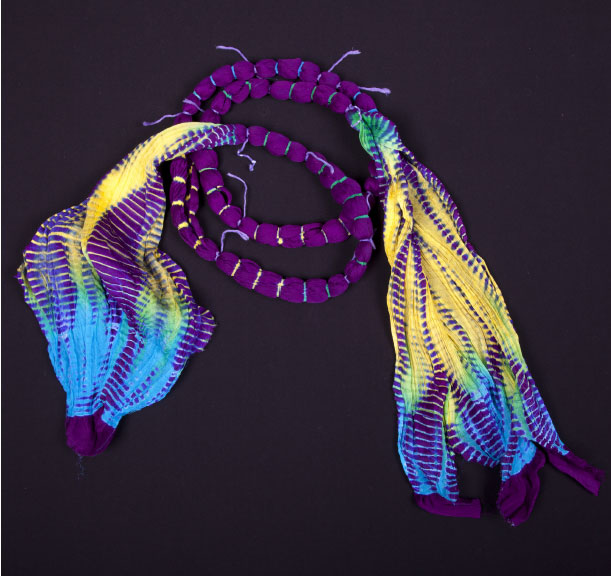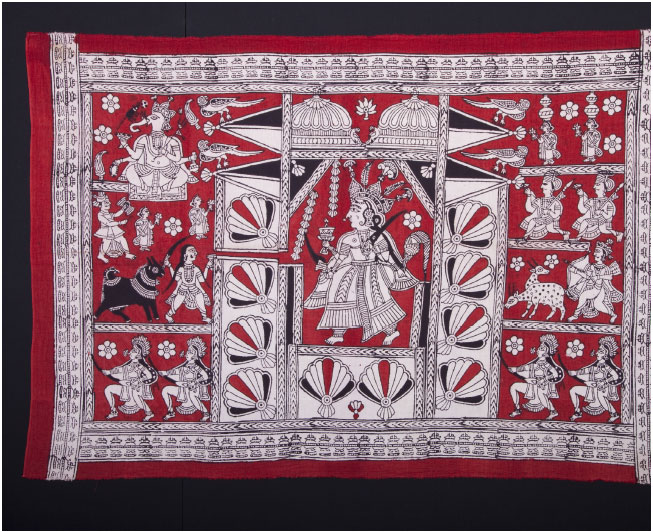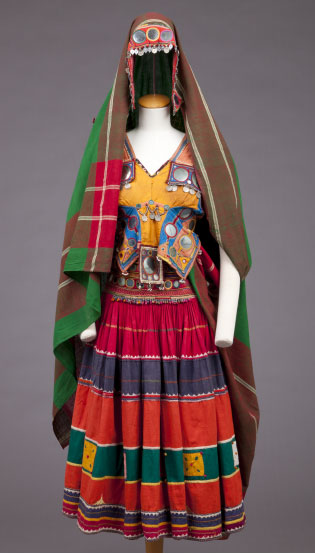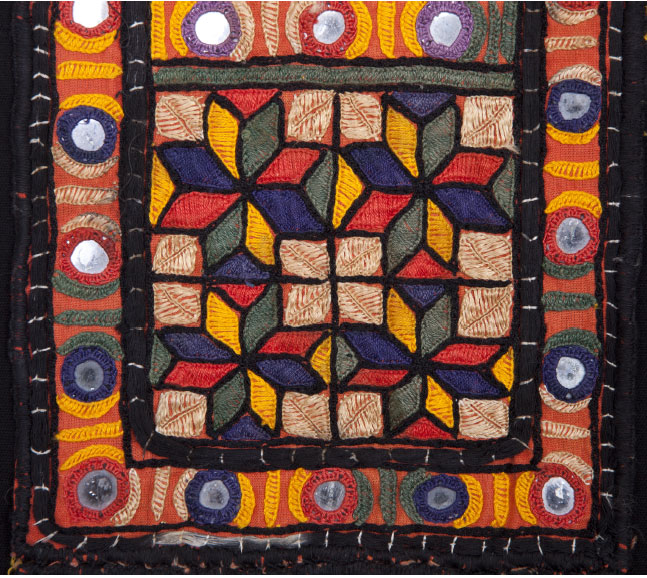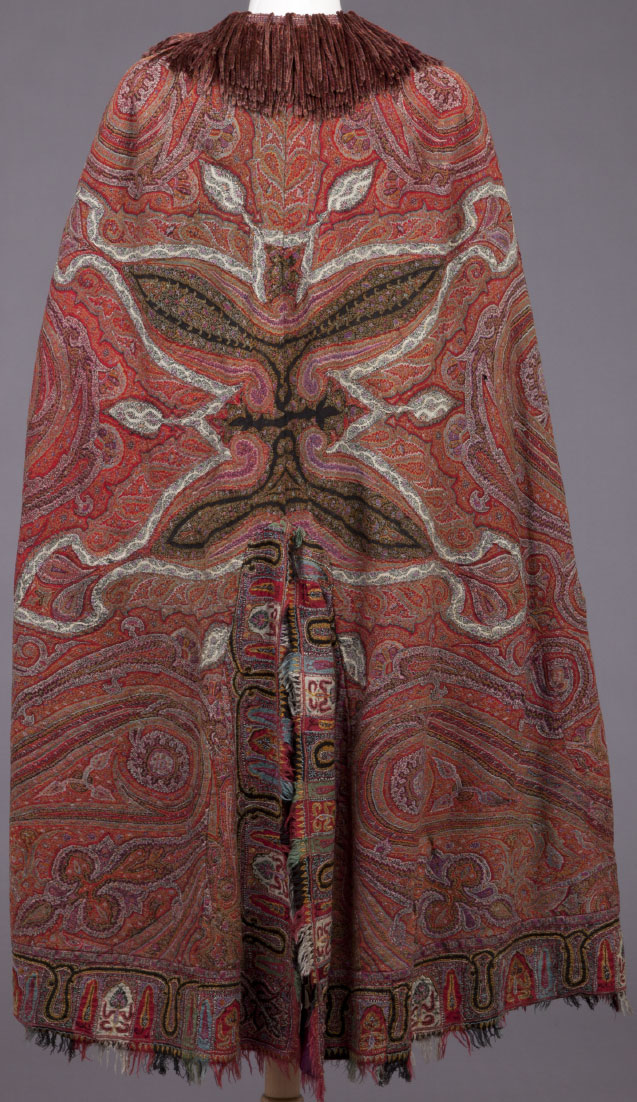
South Asian stories told stitch by stitch in “Beyond Peacocks and Paisleys”
There’s a fascinating little exhibition on view right now at the University of Minnesota’s Goldstein Museum of Design: “Beyond Peacocks & Paisleys: Handcrafted textiles of India and its Neighbors.” The pieces in the gallery — a mix of manufactured and artisanal products, intended variously for commercial, household and sacred use — are but a small part of an extensive personal collection, representing 50 years’ worth of study, gifts and travel to the Indian subcontinent by Donald Clay Johnson, a former curator of the University of Minnesota’s Ames Library of South Asia. The fascinating textiles at the Goldstein are drawn from what Johnson has come to call the Paritosh Collection, so named after a family with whom he has often stayed when he visited.
The exhibition itself is small and understated, as fits the diminutive gallery space. It’s a carefully curated selection from Johnson’s collection, varying widely from one piece to the next in terms of quality and workmanship. The show includes Kashmiri embroidered shawls, precisely tie-dyed stoles and traditional homespun khadi; there are silk saris bordered in rich gold embroidery, hand-painted wall hangings on a religious theme, fashionable dupattas and a number of fetching commercially produced home and clothing accessories, alongside a sprinkling of various and sundry specialized pieces used in worship.
But this isn’t really just a mish-mash exhibit of South Asian textiles. Think of it instead as a fascinating case study in the confluence of fashion and anthropology. Most interesting are the very specific cultural, caste and regional markers encoded in the techniques and patterning used to make these pieces. To a discerning eye, what emerges from those markers is a kind of sophisticated aesthetic language woven into the fabric, a lexicon of thread and pattern that, once you know how to read it, tells stories about the lives of the people who wear, make, display and worship with these textiles.
With that in mind, I don’t want you to run right out and see the show.
To appreciate the cleverness and nuance of what’s encoded in these designs, you need a roadmap to guide you. The unsung star of “Beyond Peacocks & Paisleys” is its exhibition catalogue, which you can download in digital format from Lulu.com for just a couple of dollars (unless you want to fork over $30 to buy a hard copy). I suggest you read the catalogue before you head out to see the exhibition — its essays are lucid, engaging and concise, so it’ll be a pleasurable task, and the photography accompanying the text is both helpful and beautifully produced.
Armed with a bit of background knowledge about the distinct regional, aesthetic, religious and caste flavors of these textile traditions beforehand, you’ll come away with a much richer sense of the very human work before you as you peruse these beautifully made pieces in person.
“Beyond Peacocks & Paisleys: Handcrafted textiles of India and its Neighbors” will be on exhibit at the University of Minnesota’s Goldstein Museum of Design through Sept. 25; the museum is located at 241 McNeal Hall, University of Minnesota — St. Paul campus, 1985 Buford Ave., St. Paul, Minn. Find gallery hours, parking information, phone numbers and more on the Goldstein’s website.
Recent Content
-
Artsarticle ·
-
Artsarticle ·
-
Artsarticle ·
